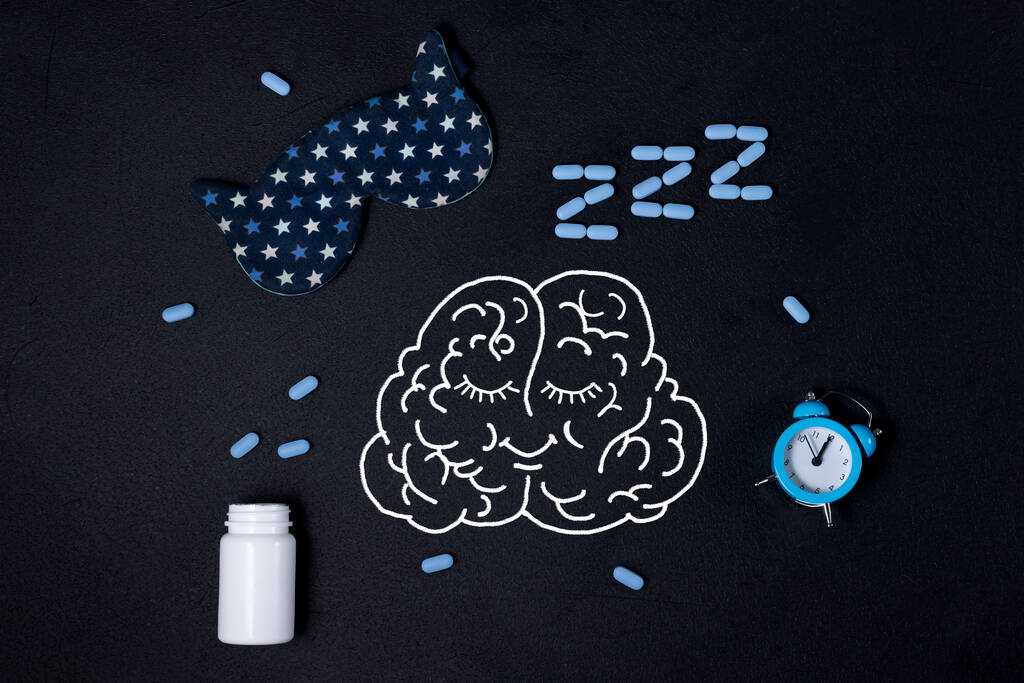Sleep Cycle: Sleep Aid Explained
September 13, 2023

Let's dive into the world of sleep, where dreams are born and rest is king. It's a realm we all visit, but often take for granted. Yet, understanding our sleep cycle can be a powerful tool in achieving better sleep and overall wellness. So, grab your nightcap, and let's embark on this journey through the night.
Our sleep cycle is a complex, fascinating system that's as much a part of us as our heartbeat. It's a symphony of biological processes, each playing its part to ensure we wake up refreshed and ready to face a new day. So, let's pull back the curtains of the night and shine a light on the mysteries of the sleep cycle.

The Basics of Sleep Cycle
Imagine, if you will, a conductor leading an orchestra through a beautiful symphony. That's essentially what your brain is doing while you sleep, guiding your body through various stages of sleep, each with its unique characteristics and benefits. This is the essence of the sleep cycle.
Typically, a sleep cycle lasts about 90 minutes and repeats throughout the night. It's composed of two main parts: Non-Rapid Eye Movement (NREM) sleep and Rapid Eye Movement (REM) sleep. Each part is crucial for different aspects of our health and wellbeing.
NREM Sleep
NREM sleep is the first act of our sleep symphony. It's composed of three stages, each deeper than the last. During NREM sleep, our body repairs tissues, builds bone and muscle, and strengthens the immune system. It's like a nightly maintenance session for your body.
The first stage of NREM sleep is a light sleep, where you can be easily awakened. The second stage is a slightly deeper sleep, where your heart rate slows and body temperature drops. The third stage, also known as slow-wave sleep, is the deepest and most restorative stage of NREM sleep.
REM Sleep
REM sleep is the grand finale of our sleep symphony. This is where dreams occur, and it's crucial for brain health. During REM sleep, your brain is almost as active as when you're awake, processing emotions, consolidating memories, and replenishing its supply of neurotransmitters.
Interestingly, REM sleep makes up about 25% of your sleep cycle, and it happens primarily in the second half of the night. So, if you're cutting your sleep short, you're likely missing out on this vital stage of sleep.
Understanding Sleep Aids
Now that we've explored the sleep cycle, let's turn our attention to sleep aids. These are tools, techniques, and sometimes medications designed to help you fall asleep, stay asleep, and improve the quality of your sleep.
There's a wide variety of sleep aids, from simple lifestyle changes and relaxation techniques to over-the-counter supplements and prescription medications. The key is finding what works best for you, and that often involves a bit of trial and error.
Natural Sleep Aids
Natural sleep aids are methods that don't involve medication. This includes things like maintaining a regular sleep schedule, creating a restful sleep environment, and practicing relaxation techniques like meditation or deep breathing.
Other natural sleep aids include regular exercise (but not too close to bedtime), avoiding caffeine and alcohol, and establishing a relaxing bedtime routine. These methods can be very effective, and they don't carry the risk of side effects that come with medication.
Over-the-Counter Sleep Aids
Over-the-counter sleep aids are non-prescription medications designed to help you sleep. They typically contain antihistamines, which can make you feel drowsy. However, they're not intended for long-term use, and they can have side effects like daytime drowsiness, dizziness, and dry mouth.
It's also important to note that over-the-counter sleep aids don't address the underlying causes of sleep problems. So, while they might help in the short term, they're not a long-term solution.
How Sleep Aids Impact the Sleep Cycle
Now, let's bring it all together and look at how sleep aids can impact the sleep cycle. The effects can vary widely, depending on the type of sleep aid and how it's used.
Some sleep aids, like certain prescription medications, can alter the structure of your sleep cycle. They might help you fall asleep faster or stay asleep longer, but they can also reduce the amount of time you spend in REM sleep, which can impact your brain health.
Positive Impacts
When used correctly, sleep aids can have positive impacts on your sleep cycle. For example, natural sleep aids like maintaining a regular sleep schedule and creating a restful sleep environment can help regulate your sleep cycle, leading to better sleep quality and consistency.
Some over-the-counter sleep aids and prescription medications can also provide short-term relief for sleep problems, helping you get the rest you need while you work on addressing the underlying causes of your sleep issues.
Negative Impacts
On the flip side, sleep aids can also have negative impacts on your sleep cycle. Over-reliance on sleep aids, especially over-the-counter and prescription medications, can lead to dependence and withdrawal symptoms when you stop using them.
Additionally, some sleep aids can interfere with the natural progression of your sleep cycle, reducing the amount of time you spend in REM sleep. This can lead to less restorative sleep and potential impacts on your brain health.

Conclusion
And there you have it, a playful journey through the night, exploring the intricacies of the sleep cycle and the role of sleep aids. It's a complex topic, but understanding it can be a powerful tool in achieving better sleep and overall wellness.
Remember, sleep is not a luxury, but a necessity. So, treat it with the respect it deserves, and your body and mind will thank you. Sweet dreams!

 Back to Blog
Back to Blog